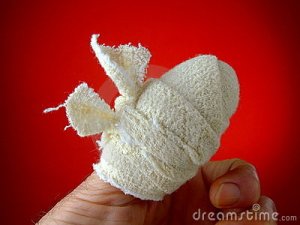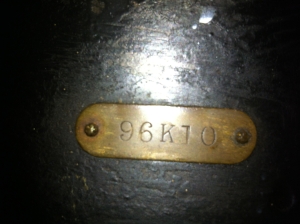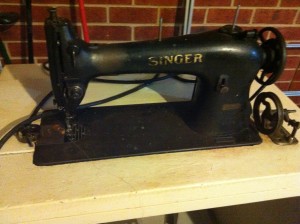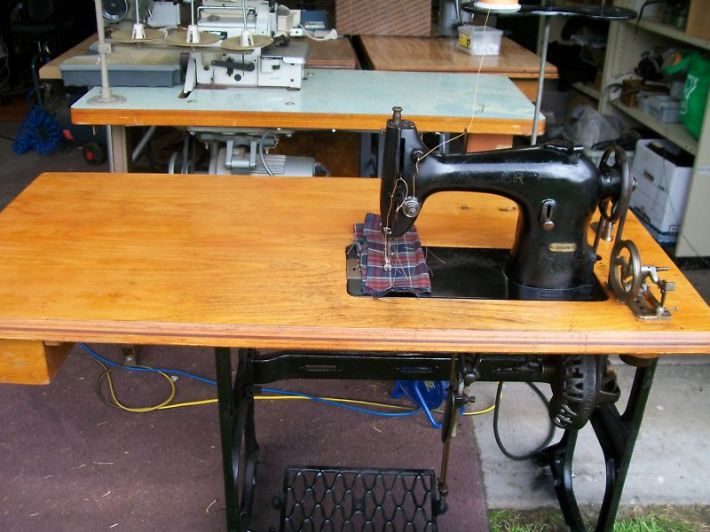I’ve officially started my course this week, with my first classes on pattern making and garment construction. It is hte first time since I was 13 (about 1993, for anyone who’s counting) that I’ve been taking any sort of formal sewing instruction, so I’m curious to find out just how many bad habits I’ve picked up along the way. Given that the product of the 1993 high school textile classes was a rather hideous appliqued tracksuit top with matching pants and a great story about a friend sewing through her thumb, I have higher hopes for what I learn from this round.
The start of classes has rather neatly coincided with finishing my cleaning operation on Ethel’s innards. There is still work to be done tarting up her outer appearance, but she is now officially gunk free, and has a fully cleaned and re-assembled bobbin winder. It’s also just in time for her younger sister to start acting up, making unfortunate noises and shorting out her light on a regular basis, so I’m quite excited at the thought of having a straight stitch machine online that doesn’t require me to treadle. How I’ll cope with button holing when baby Singer gives up at last I do not know – I might just find myself forced to splurge for a new machine, heaven forbid. In the mean time, I’ve decided it’s time to give a photographic update on Ethel’s progress. Please excuse the shoddy photography once again – phone cameras have their limitations.
And now that I’ve done all that work, I have a bit of a confession to make. I’m coveting new industrial machines. It’s all the fault of my class. I’ve had a taste of life with automatic thread cutting, of a setting that means you always finish with the needle out of the fabric, of speed control settings, of computerisation. And I’m left wondering if I can jury-rig some kind of steam punk creation onto the venerable Ethel to bring her into the modern age in style. I know that all sorts of things were done to these machine heads, making them look like something straight out of Jules Verne, but the truth is, I just want a shiny new Juki to play with for my own. And with redundancy rearing it’s head at work, I’m thinking pay out could contribute to one. But then I think of Ethel, and the guilt kicks in. Because she does the work just as well. She’s just lacking in the bells, whistles, and computerisation. And the shiny. Perhaps this weekend will see her get some of that back, though. I have plans to see what car polish and elbow grease can do for her. If they can create auto features, I’ll be truly surprised, but here’s hoping for a steam punk miracle intervention.




